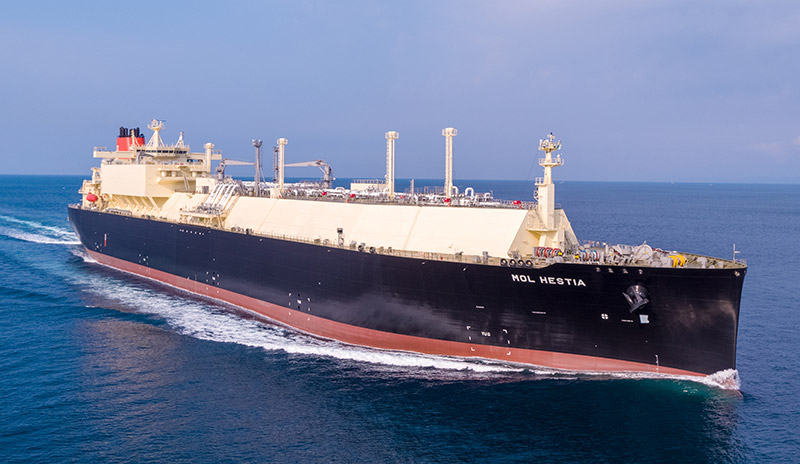ENB Pub Note: Why is it important to note that the Japanese shipping firm is increasing the number of tankers and currently has about 30 new tankers on order? One key point President Trump has in his energy exports is the United States’ LNG exports to our trading partners. We don’t own a fleet, and we need to yesterday. This is critical in order for the United States to guarantee LNG deliveries; we need to have United States-flagged ships. Energy security starts at home, and we can not guarantee deliveries to our trusted trading partners.
-
Australia: 43% of import value, approximately 28.4 million metric tons ($19.8 billion). Australia remains Japan’s top supplier.
-
Malaysia: Around 6.85 billion in import value, roughly 10.4 million metric tons (estimated 15–16% of volume).
-
Russia: About 6.1 million metric tons ($4.17 billion), down 11% from 2022.
-
United States: 5.5 million metric tons ($3.26 billion), up 34% from 2022, making the U.S. the fourth-largest supplier with an 8.7% share.
-
Papua New Guinea: Approximately 2.76 billion in import value, around 4.2 million metric tons.
-
Middle East (including Qatar): 6 million metric tons, down 12% from 2022, with Qatar and others accounting for about 15% of imports.
-
Others: Smaller suppliers like Indonesia, Brunei, Mozambique, Egypt, and China contribute the remainder, with China ($95.5 million), Mozambique ($88.1 million), and Egypt ($64.6 million) showing growth between 2022 and 2023.
-
Import Value: Japan spent $46.1 billion (6.5 trillion yen) on LNG imports in 2023, a 22.6% decrease from 2022 due to lower global prices.
-
Resale Trends: In fiscal year 2023 (April 2023–March 2024), Japanese companies resold a record 38.25 million metric tons of LNG to overseas markets, surpassing imports from any single country, as domestic demand dropped.
-
Infrastructure: Japan has 37 LNG import terminals with a storage capacity equivalent to 12 billion cubic meters of natural gas, supporting about 36 days of domestic demand.
-
Future Outlook: LNG imports are projected to decline further, potentially to below 50 million metric tons by 2030, due to increased nuclear and renewable energy use, with a 53% reduction in LNG-fired power generation targeted by 2030.
-
Data for 2023 is primarily from Japan’s Ministry of Finance and aligns with Reuters and Statista reports.
-
Conversion used: 1 million metric tons ≈ 1.38 billion cubic meters.
-
Fiscal year data (April–March) may slightly differ from calendar year estimates. Some sources report 64.89 million metric tons for fiscal 2023.
-
A 2024 estimate from an X post suggests imports of 65.89 million metric tons, but this lacks official corroboration.
The Japanese shipping firm revealed this in its results report on Wednesday.
This is one more LNG carrier than in the previous quarter and ten more LNG carriers than in the first quarter of 2024.
MOL said in the previous quarter that it expects to have 108 LNG carriers in its fleet by the end of March 2025.
Brokers recently reported that MOL sold its 2004-built 137,500-cbm steam LNG carrier, Dukhan, for scrap.
According to the new report, MOL expects its LNG carrier fleet to expand to 108 vessels by March 2026.
MOL’s fleet includes LNG carriers owned and/or operated by joint venture companies.
Also, MOL previously said it had about 30 LNG carriers on order.
As of March 31, 2025, MOL’s fleet included seven FSUs/FSRUs, three LNG bunkering vessels, one LNG powership, and six ethane carriers.
As part of its plans to reduce emissions, MOL has also set a target to operate 90 LNG-powered and methanol-fueled vessels by 2030.
MOL reported revenue of 1,775.4 billion yen in fiscal 2024, up from 1,627.9 billion yen in fiscal 2023, while operating profit of 150.8 billion yen rose from 103.1 billion yen.
The company’s energy business, which includes the liquefied gas segment, reported revenue of 571.5 billion yen and profit of 103.6billion yen, both up compared to the year before.
MOL said its LNG carrier business “secured stable profits due to the existing long-term charter contracts and the delivery of the newbuildings.”
The LNG infrastructure business reported increased profit year-on-year due to the stable operation of existing projects, MOL said.
Looking ahead, MOL said “stable” profits are projected through existing long-term charter contracts and the commencement of operations of new LNG vessels to be delivered in this fiscal year.

